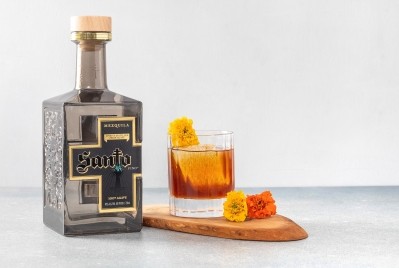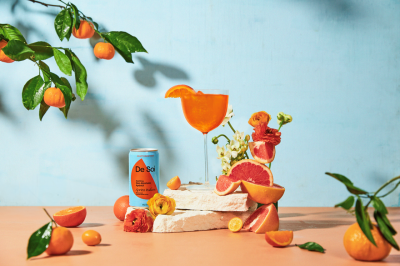A sparkling future: The wines bubbling up to take over from Champagne

The global wine industry is struggling: but sparkling wines are a consistent bright spot.
Take, for example, data from the US. Here, sparkling wine recorded an impressive volume CAGR of +6% in the US from 2017 to 2022, compared to a CAGR decline for total wine of -1%, according to data from IWSR.
That means sparkling wine now accounts for 12% of the total wine category: up from 8% in 2017. And this figure is forecast to continue to grow.
But the exciting part of the category is not about Champagne: a category that’s seen volume declines as consumers trade down to more affordable options.
Instead, consumers are thirsty for something new. In fact, almost half (45%) of drinkers want to try new sparkling wines, rather than sticking to what they know, according IWSR.
That’s an exciting opportunity for an industry that is often accused of being slow to move with the times and appeal to younger generations. And sparkling wine is shifting in new ways...
So which are the sparkling wines to watch?
1) When Champagne isn’t Champagne
Champagne is a protected geographical indicator, a protection it’s enjoyed since 1936.
That means – in order to be called Champagne – the product must meet two conditions.
It must come from the Champagne region of France, and it must comply with the production process of the Champagne designation.
Champagne is struggling: data from the Comite Champagne (CIVC) shows shipments of champagne were down 8.2% in 2023 and down 15.2% in the first half of 2024. Champagne woes are a trend recently confirmed by luxury retailer LVMH.
Consumers are increasingly aware they have cheaper - and arguably equally good - options to choose from.
So many French sparkling wines may be very close to Champagne: but cannot be labeled as such when they fall just outside of the conditions.
There’s Crémant: which is produced in the same way as Champagne but not in the region – giving rise to a version that is very similar but far cheaper.
Mousseux covers wines that aren’t Crémant or Champagne.
And Blanquette de Limoux comes specifically from the south.
2) Prosecco, Cava and beyond
Many wine-producing countries have their own sparkling superstar. In Italy, it’s Prosecco. In Spain, it’s Cava. In Portugal, its Espumate. In South Africa, Cap Classique is made by the old Champagne method.
Each of these bring their own touch of glitz, glamour and exotic vibes to the wine table. Italian sparkling wines, for example, enjoyed a volume CAGR of +10% from 2017 to 2022 in the US.
A drink that’s grown to heady highs, Prosecco maintains its momentum. That’s thanks to a diverse range within Prosecco of affordable to luxury options. In the US, the consumers who reported drinking Prosecco moving up from one-third in 2019 to 42% in 2023. Prosecco also benefits from its use within the trending Aperol Spritz cocktail.
In the UK, English sparkling wine has seen a surge in popularity as the country starts to make in-roads as a wine-producing nation. In fact, 8.3 million bottles were produced in 2022.
Prosecco for men
It's no surprise to hear that the sparkling wine category is being driven by the younger demographic: with younger consumers being more enthusiastic about trying new styles.
But what's interesting is that the category has witnessed a demographic shift over the past few years: with younger adult men now spearheading deeper engagement with the category, according to IWSR.
In fact, some 54% of men aged 35-54 classify themselves as ‘wine explorers’ who enjoy trying new or different styles of sparkling wine on a regular basis. That's because they're prepared to spend more, drink more often and explore more styles.
Sparkling wine - and in particular Champagne - was once about celebrations.
Now, it's seen as increasingly suitable for casual gatherings and everyday drinking occasions.
Three in 10 sparkling wine consumers now consider it suitable for a relaxing drink at the end of the day at home, up from 23% in 2019, according to IWSR.
The rise of the brunch occasion and the popularity of its accompanying classic - mimosas - are also helping sparkling wine go beyond weddings, birthdays and celebrations.
3) Sparkling red wines
Once again, an Italian wine leads the way with its wine-producing finesse.
Lambrusco, sparkling red wine, comes from the Emilia-Romagna region: which counts Bologna as its capital and a rich gastronomic background.
Australia, meanwhile, boasts its unique sparkling shiraz, created in the 17th century on a champagne-like process.,
4) Semi-sparkling
Pét Nat is short for ‘Pétillant Naturel’ – French for ‘naturally bubbly’.
This is a delicate, unfiltered sparkling wine made using an ancient method where yeast is left in the bottle after fermentation.
It’s been rising in popularity in the UK, where it’s identified as a key wine trend by retailer M&S.
As a technique rather than a style of wine, the flavor of the wine can vary enormously, but its generally a more gentle fizz than other sparkling wines, with a fruit-forward flavor.
Similarly, Frizzante – which translates simply as ‘bubbly’ in Italian – also have lighter bubbles and a lower alcohol content. Spritzig, again, is a lightly sparkling German wine.
These wines all come in with 1 – 2.5 atmospheres of pressure; compared to 5-6 atmospheres for most other sparkling wines.












